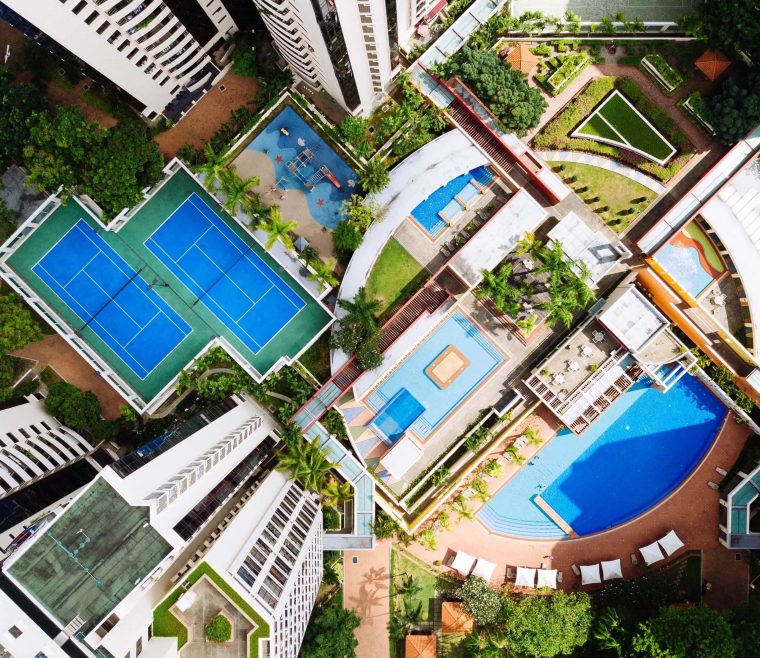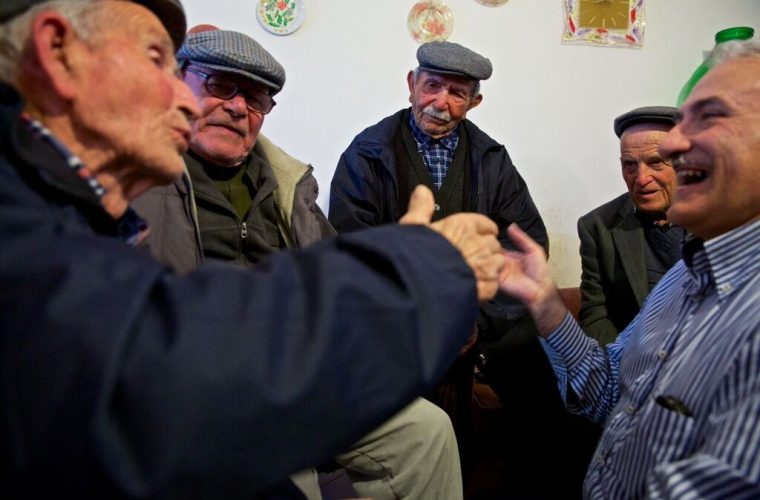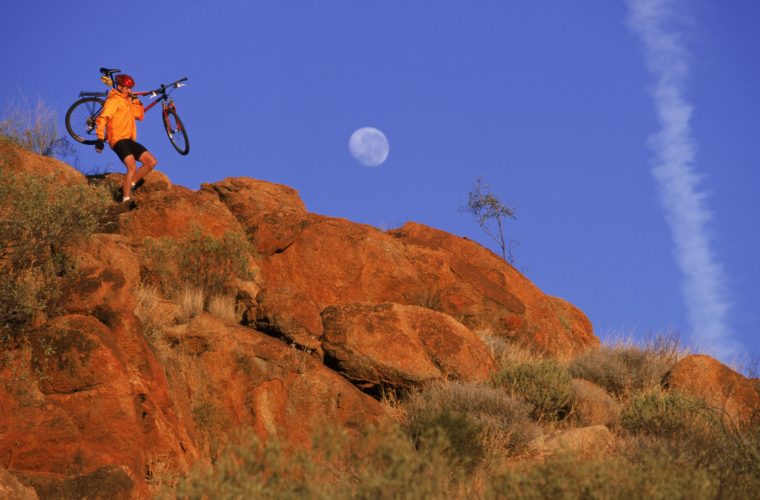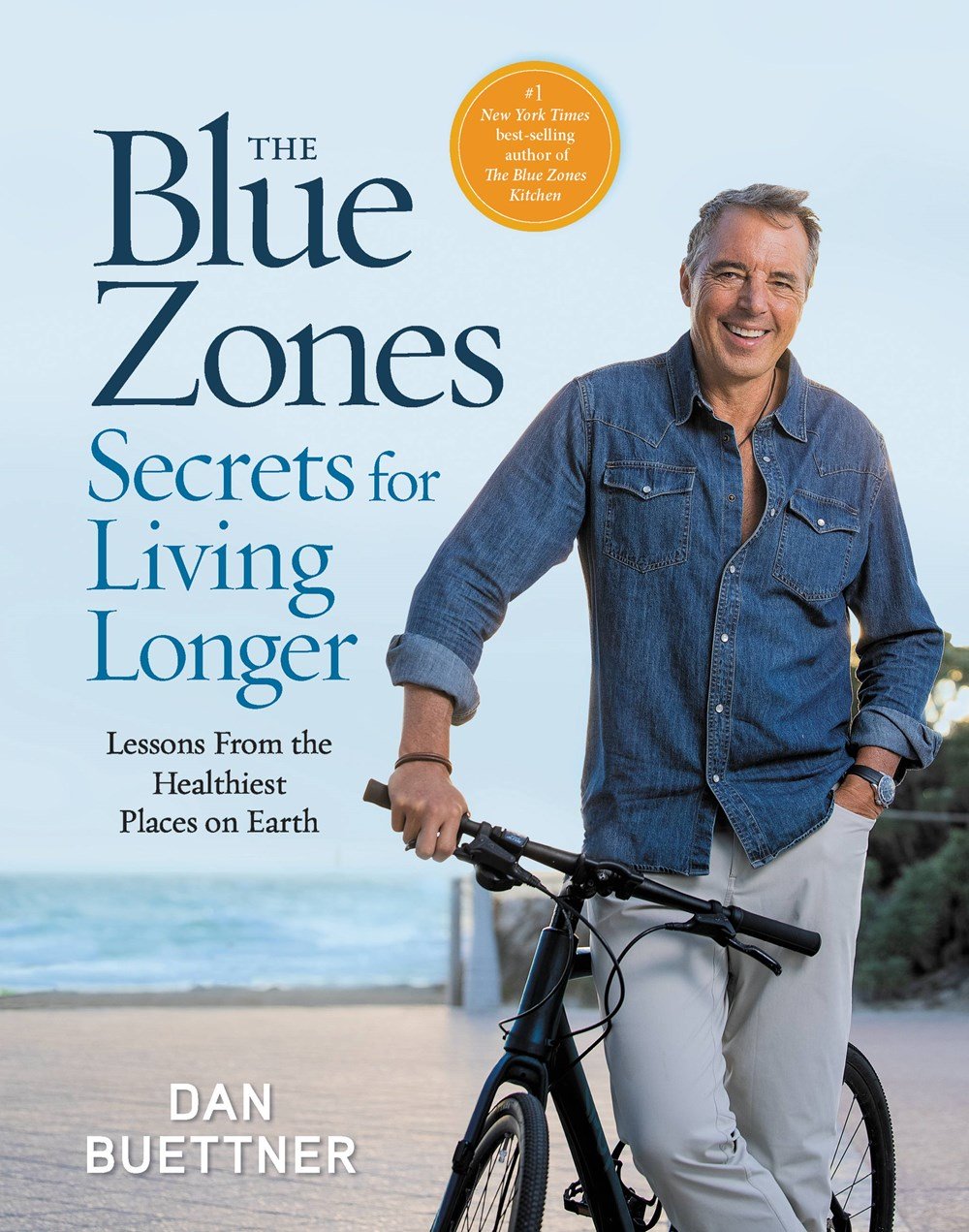What would you say to somebody who asks why the Blue Zones approach doesn’t necessarily incorporate what people think of when you think of fitness and health? Why isn’t Blue Zones doing CrossFit or weight loss pills and protein powders?
Well, I take a cue from evolution. If you look at how humans have evolved over time, they didn’t sit down at a desk or on their couch for eight hours and then hope to make it up for a half hour or 45 minutes in the gym. Blue Zones is an extension of how people have lived forever. They live in environments that nudge them into moving every 20 minutes or so. It’s a natural inclination because humans have worked too hard for most of the history of our species, that now we have technology mechanized – combustion engines do a lot of work for us. The sad byproduct is the work our bodies were engineered to do no longer gets done; our bodies don’t get the regular low-intensity movement they need to thrive.
Is exercise or fitness a normal, natural thing for people to do? And for those who don’t enjoy moving are they responding naturally to their inclination to conserve energy?
What I looked at are populations that have lived a long time without the chronic diseases that are killing us or foreshortening our lives. In these populations, people don’t exercise in the way we think of exercise. Unfortunately, I think exercise and fitness have us trying to solve the right problem but in the wrong way. The wrong way is thinking that I’m going to workout super hard on the weekend, run a marathon, or pump iron for an hour and I get all the exercise I need. That’s not the way our bodies were built. Now, is exercise a bad thing? No, but I put it in the category of recreation.
What is your approach to introducing physical activity in the Blue Zones Project cities?
The Blue Zones Project is in 26 cities across the U.S. and the idea that physical activity should be something other than exercise is hard for people to grasp. The approach I take is not trying to change individual behaviors. We don’t launch into cities, like Fort Worth, TX, and try to get all 770,000 people to start doing more jumping jacks. We know there are two dozen ways, or more, to design a city, home, school, and workplace where you will be nudged into small bursts of physical activity all day long, most the time without even knowing. If I can get cities to clean up parks, narrow traffic lanes, create bike lanes, widen sidewalks, plant trees, clean up graffiti, and buttress public transportation as much as possible, given budgets – I can raise the physical activity level of that whole population by 30 percent.
Blue Zones is one of the first “sexy” approaches to the public health scene. What kind of support do you get from the public health community?
Blue Zones has two parts to it. The first part comes from the National Geographic study that identified the five areas where people live the longest and the components and environmental characteristics of these places that yield long life.
The second part is the realization that when people live a long time it’s a result of their environment, not because of willful intent on their part. We’re evolutionarily hardwired to see food and crave it and you can’t go anywhere these days without being tempted by food. The answer is not trying to change our hardwiring but instead to get our environment to coincide with the hardware. Many individuals in the public health community embrace this idea as well and help us with their expertise. Currently, healthcare costs our country about $2 trillion a year. What we need to do is take that $2 trillion we’re wasting on healthcare each year, and its attendant costs, and shift it to optimizing our environment.
What do you think about the fitness industry itself? It seems there isn’t really a market incentive for the fitness industry to actually succeed. If everybody actually lost weight they’d be working themselves out of business.
America was built on enterprise. There is a demand for the service; there is a perception, flawed, as it may be, that if I exercise I’ll look like that guy or that woman on the cover of the fitness magazine. People want to aspire to that. I would never blame anybody for trying to make their living, but I also don’t think it is the free market’s job to make people healthier.
Do you talk to people about the reality that there is a difference between aesthetics versus health outcomes?
They go hand-in-hand. For the most part, you know, if you’re not overweight you are healthier. I think there’s more of a place for the fitness industry for the 20- and 30-year-old crowd. It can deliver results for committed people. You’re talking to a guy whose mission is making populations healthier and if your mission is to make a population healthier, the fitness industry, in my opinion, is not a good investment. Not a bad thing, you know. I like the fitness industry a lot better than I like the porn industry or the tobacco industry or the soda industry. It’s way better than any of those.
You put it really well that fitness falls in the category of recreation. So, how do make changes to populations without pushing fitness and exercise?
What drives me nuts is when people sum up Blue Zones as diet and exercise. Diet and exercise is exactly what it is not. Diet and exercise do not work. Their short-term success is occasional, but they never, on a population, deliver long-term results. It just doesn’t work long enough. It will give you aesthetic results in the short run, I think, as long as you stay committed, but our brains are hardwired for novelty and we get bored, we get injured – it’s just too easy to get derailed from it. If you have a walkable community then it’s a lot easier to walk to the grocery store or out to eat than it is to get in your car. You’re going to get a lot more physical activity, dependably and for decades, than you are if you drive to the gym.
Who are your clients? City governments? Hospitals?
It’s a consortium from the community. It’s always cities’ leaders, which include government, but it’s also the business community and typically a BlueCross BlueShield plan, hospital system, or health foundation. It is when those groups are bundled together that we can do our work.
Is there interest for expansion to more cities?
Yes, there are probably 50 cities that are working to get us to come into their communities. It’s a special city that brings us in because they have to be ready and completely aligned with the notion of making commitment contracts. They have to agree to make the unhealthy choice harder and to make the easy choice unavoidable when possible, or at least a lot easier. It’s not right for every city, but you know, surprisingly, you’d think, “Well that sounds like a bunch of liberals.” Actually, our biggest cities are very conservative, so it’s working counter-intuitively within environments you wouldn’t expect.





